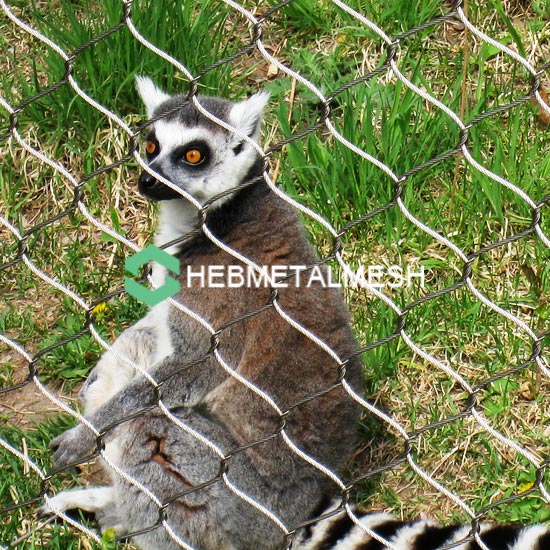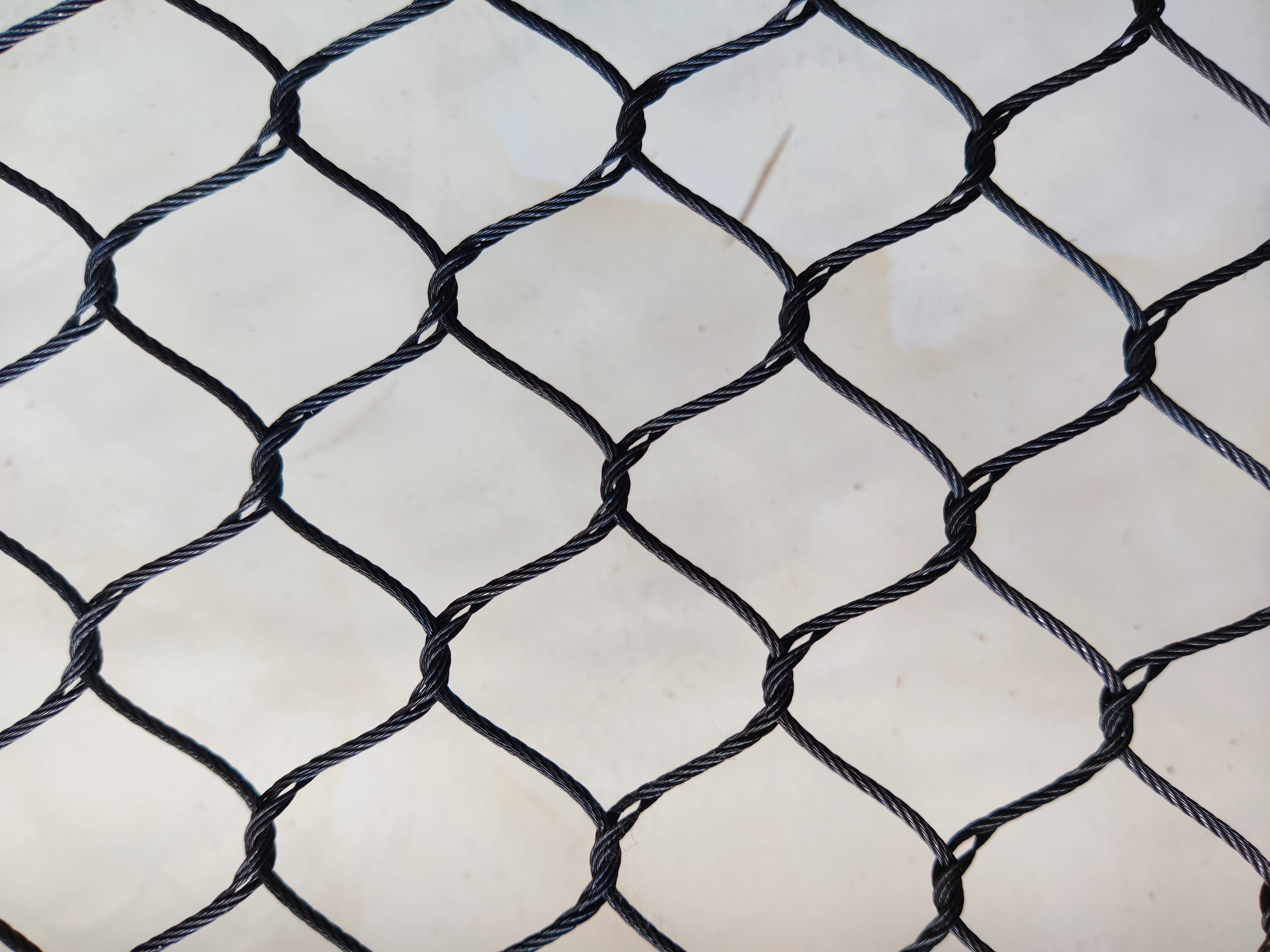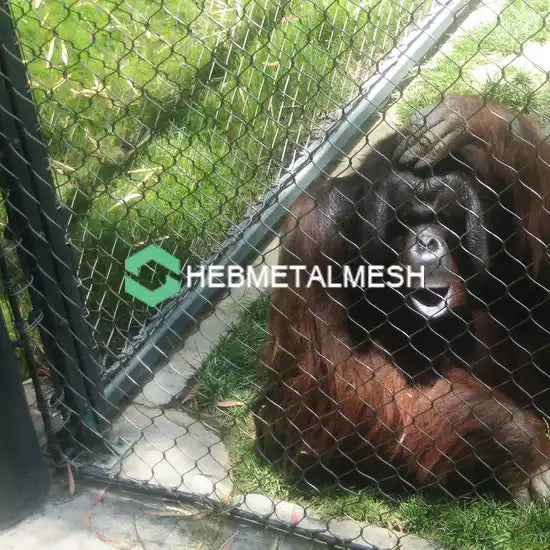
Do You Know Zoo Mesh Series In Hebmetalmesh?
Zoo Mesh are often touted as spaces for animal conservation, education, and entertainment. However, the conditions under which animals are kept in most zoos can be controversial, with episodes of animal mistreatment and inadequate care being reported regularly. The mesh enclosure system is one of the innovations that have been introduced in some zoos to alleviate the pain and suffering inflicted on captive animals. In this essay, we explore the advantages and disadvantages of using mesh enclosures in zoos.
Mesh enclosures are ideal for zoos because they provide optimal living conditions for animals, both in terms of space and natural surroundings. These spaces come in various sizes, depending on the species that will occupy them. An example of a zoo mesh enclosures is the London Zoo, which is home to different species of animals, including primates, reptiles, and birds. With mesh enclosures, the animals can move around and have more freedom than they would have in traditional confinement spaces like cages. For instance, in the London Zoo, the gorilla house and the penguin beachstand at an incredible 85 and 150 square metres respectively, allowing for a realistic setup and plenty of space for the animals to roam freely.
The natural surroundings within zoo mesh enclosures mimic the things that animals would have in their natural habitats. Unlike cage confinement, where animals have restricted ability to navigate within their surroundings, mesh enclosures provide trees, rocks, and foliage, and this serves a range of purposes such as natural resting places, hiding spots, and feeding areas. In the Bristol Zoo, for example, the Monkey Jungle exhibit is a meshed outdoor space that houses species like the golden-cheeked gibbon and colobus monkey. The animals can climb along the pre-installed mesh roof, experience natural sunlight on their skin, and interact with their environments as they please.
However, there are also several disadvantages of mesh enclosures for animals in zoos. One such disadvantage is the potential for boredom. The animals may become bored with their surroundings after a while, which may lead to behavioural and physical problems like pacing, aggression and other unintended effects. Additionally, some animals may require specialised habitats, which zoo mesh enclosures may not accommodate, leading to the accumulation of many animals that are difficult for staff members to care for, and limited display options available to zoo mesh.
In conclusion, zoo mesh enclosures offer a more viable alternative to the traditional cages for animals in zoos. These enclosures provide animals with an environment that mimics their natural habitats, giving a more humane living condition. With zero risk of animal escape, visitors can be in close proximity to the animals, making it easier to learn about them and develop a feel for the creatures. However, with the implementation of mesh enclosures being quite costly and taking up vast space, it may not be feasible for zoos across the globe, and thus, the trend may not be economically viable in some of the developing countries. Therefore, when introducing these spaces, management should undertake a thorough cost-benefit analysis to ensure that the resources and facilities allocated are adequate to reduce the risk of provoking negative animal behaviours and creating safety hazards.
Mesh enclosures are ideal for zoos because they provide optimal living conditions for animals, both in terms of space and natural surroundings. These spaces come in various sizes, depending on the species that will occupy them. An example of a zoo mesh enclosures is the London Zoo, which is home to different species of animals, including primates, reptiles, and birds. With mesh enclosures, the animals can move around and have more freedom than they would have in traditional confinement spaces like cages. For instance, in the London Zoo, the gorilla house and the penguin beachstand at an incredible 85 and 150 square metres respectively, allowing for a realistic setup and plenty of space for the animals to roam freely.
The natural surroundings within zoo mesh enclosures mimic the things that animals would have in their natural habitats. Unlike cage confinement, where animals have restricted ability to navigate within their surroundings, mesh enclosures provide trees, rocks, and foliage, and this serves a range of purposes such as natural resting places, hiding spots, and feeding areas. In the Bristol Zoo, for example, the Monkey Jungle exhibit is a meshed outdoor space that houses species like the golden-cheeked gibbon and colobus monkey. The animals can climb along the pre-installed mesh roof, experience natural sunlight on their skin, and interact with their environments as they please.
However, there are also several disadvantages of mesh enclosures for animals in zoos. One such disadvantage is the potential for boredom. The animals may become bored with their surroundings after a while, which may lead to behavioural and physical problems like pacing, aggression and other unintended effects. Additionally, some animals may require specialised habitats, which zoo mesh enclosures may not accommodate, leading to the accumulation of many animals that are difficult for staff members to care for, and limited display options available to zoo mesh.
In conclusion, zoo mesh enclosures offer a more viable alternative to the traditional cages for animals in zoos. These enclosures provide animals with an environment that mimics their natural habitats, giving a more humane living condition. With zero risk of animal escape, visitors can be in close proximity to the animals, making it easier to learn about them and develop a feel for the creatures. However, with the implementation of mesh enclosures being quite costly and taking up vast space, it may not be feasible for zoos across the globe, and thus, the trend may not be economically viable in some of the developing countries. Therefore, when introducing these spaces, management should undertake a thorough cost-benefit analysis to ensure that the resources and facilities allocated are adequate to reduce the risk of provoking negative animal behaviours and creating safety hazards.
Tags:

